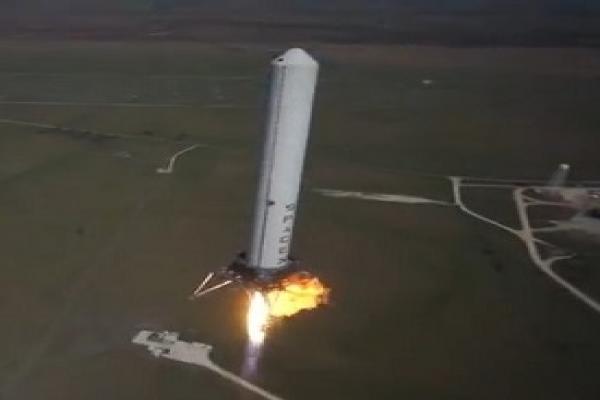SpaceX Resuable Grasshopper Rocket Climbs to 2,440 Feet
15-10-2013
SpaceX's experimental, Vertical Takeoff Vertical Landing (VTVL) Grasshopper rocket achieved another altitude milestone last week, soaring to 744 meters (2,440 feet) before descending under its own power to land back safely on its launch pad, the private space firm said over the weekend.
The Grasshopper's Oct. 7 test flight was its "highest leap to date," SpaceX said. The 10-story-tall VTVL vehicle's eighth test flight saw it achieve more than double the altitude accomplished in a June test, which reached more than 1,000 feet.
While most rockets are built to burn up in the atmosphere after launching and during reentry, SpaceX's Grasshopper is designed to return intact to the launch pad for a vertical landing so it can be reused for future launches.
Last week's flight was the Grasshopper's first since an August divert test at SpaceX's South Texas testing site with an angled launch sent the rocket about 330 feet off of its vertical flight path on an 820-foot ascent. Using short lateral bursts from the Grasshopper's cold gas thrusters near the base of the vehicle, SpaceX flight engineers successfully repositioned the rocket in flight to line it back up with the launch pad and bring it back down safely after about a minute in the air.
The latest test was a simple up-and-down maneuver, but one that again made use of the Grasshopper's "full navigation sensor suite with the F9-R closed loop control flight algorithms to accomplish a precision landing," which was first optimized for the June test flight. Upon reaching peak altitude, the Grasshopper hovered for about 10 seconds before commencing its descent, with the entire flight and landing taking about 1 minute and 17 seconds.
During the rocket's descent, flames can be seen flickering from underneath its engines in different directions, perhaps indicating windier conditions than we've seen in previous Grasshopper test flights, though SpaceX did not mention flight conditions in its brief statement on the test.
Earlier Grasshopper tests, including a successful, 820-foot flight and landing in April, utilized other rocket sensors that provided less accurate data for managing a vertical landing by the prototype VTVL vehicle.
The successful eighth test flight of the Grasshopper, which SpaceX first introduced to the public in the fall of 2011, was in keeping with the company's pattern of taking its reusable rocket to loftier altitudes every few months.
The VTVL vehicle uses many of the same rocket parts SpaceX employs for its official spaceflight missions, which include satellite insertions and cargo trips to the International Space Station. The Grasshopper has a Falcon 9 rocket first stage tank and a Merlin 1D engine, but unlike other SpaceX rockets, also possesses "four steel and aluminum landing legs with hydraulic dampers, and a steel support structure," the company said.

